Las tendencias en Internet son inescrutables. Nadie sabe cuál será el próximo reto de moda, el tipo de fotografía que será un ‘must’ el próximo verano o los vídeos que marcarán tendencia en las próximas semanas. Esa es, quizás, la parte más divertida de las redes sociales. ¿Quién habría podido imaginar que en 2021, en plena pandemia mundial, se haría viral unos cánticos de marineros del siglo XIX? Pues así es, las llamadas ‘sea shanties’ acumulan millones de visitas en TikTok y se han convertido en el reto del momento. En este artículo os hablamos de ellos y os dejamos algunos ejemplos para que practiquéis en casa vuestro inglés.
El trabajo del marinero nunca ha sido fácil. Menos aún cuando las travesías podían durar meses, incluso años, enfrentándose a todo tipo de inclemencias meteorológicas, la escasez de recursos y la dureza de la vida a bordo. Los miembros de la tripulación entonaban cánticos mientras realizaban sus tareas diarias, como un modo de concentrarse y trabajar en equipo. Siempre existía un líder vocal, que ahora además quien marcaba el ritmo, mientras el resto de marineros lo acompañaban en coro, repitiendo los estribillos de versos sencillos y pegadizos.
No se puede establecer un origen concreto para las ‘sea shanties ’, aunque es indudable que nacieron a bordo de barcos mercantes o pesqueros, dada su temática náutica. Existen cánticos tradicionales de habla inglesa procedentes de Escocia, EEUU, Australia, Nueva Zelanda…
Quizás el ‘sea shanty’ más popular de los últimos meses sea ‘The Wellerman’, interpretado por el cantante escocés Nathan Evans y precursor de este nuevo fenómeno en TikTok. El vídeo de Evans entonando esta rítmica canción que parece tener su origen en un barco ballenero australiano del siglo XIX acumula más de 5 millones de visitas en la red social, así como un buen número de variantes de otros usuarios, incluidas muchas con acompañamientos instrumental. De hecho, si se visita el hashtag #seashanties se puede encontrar cientos de vídeos centrados en estos cánticos.
¿Tú también te animas con el reto? Esta puede ser una excusa excepcional para practicar tu inglés, cantando bien arriba los versos que te detallamos a continuación de ‘The Wellermen’. Y, de paso, embriagarnos con el espíritu de equipo que impregna la canción, que nos recuerda que todos estamos en el mismo barco, ahora más que nunca.
@jonnystewartbass
#duet with @the.bobbybass SHANTY TIME once again! Adding a lower middle harmony 🙂 @nathanevanss @_luke.the.voice_ @apsloan01 #shantytok #wellerman
♬ original sound – N A T H A N E V A N S S
There once was a ship that put to sea
The name of the ship was the Billy of Tea
The winds blew up, her bow dipped down
O blow, my bully boys, blow
Soon may the Wellerman come
To bring us sugar and tea and rum
One day, when the tonguin’ is done
We’ll take our leave and go
She had not been two weeks from shore
When down on her a right whale bore
The captain called all hands and swore
He’d take that whale in tow
Soon may the Wellerman come
To bring us sugar and tea and rum
One day, when the tonguin’ is done
We’ll take our leave and go
Before the boat had hit the water
The whale’s tail came up and caught her
All hands to the side, harpooned and fought her
When she dived down below
Soon may the Wellerman come
To bring us sugar and tea and rum
One day, when the tonguin’ is done
We’ll take our leave and go
No line was cut, no whale was freed
The Captain’s mind was not of greed
But he belonged to the whaleman’s creed
She took the ship in tow
Soon may the Wellerman come
To bring us sugar and tea and rum
One day, when the tonguin’ is done
We’ll take our leave and go
For forty days, or even more
The line went slack, then tight once more
All boats were lost, there were only four
But still that whale did go
Soon may the Wellerman come
To bring us sugar and tea and rum
One day, when the tonguin’ is done
We’ll take our leave and go
As far as I’ve heard, the fight’s still on
The line’s not cut and the whale’s not gone
The Wellerman makes his regular call
To encourage the Captain, crew, and all
Soon may the Wellerman come
To bring us sugar and tea and rum
One day, when the tonguin’ is done
We’ll take our leave and go
Soon may the Wellerman come
To bring us sugar and tea and rum
One day, when the tonguin’ is done
We’ll take our leave and go
Imágenes
cancion del marinero o realiza una nueva búsqueda para encontrar más fotografías e imágenes de stock.
Ordenar por:
Más popular
song barco de papel – cancion del marinero fotografías e imágenes de stock
Song barco de papel
ilustraciones, imágenes clip art, dibujos animados e iconos de stock de arte musical con personaje marinero de dibujos animados tocando la guitarra – cancion del marinero
Arte musical con personaje marinero de dibujos animados tocando…
las canciones del pasado – cancion del marinero fotografías e imágenes de stock
Las canciones del pasado
ilustraciones, imágenes clip art, dibujos animados e iconos de stock de conjunto de personas multitarea de diferentes profesiones. cantante ocupado, hombre de negocios, peluquero, médico, pintor con muchas manos ilustración vectorial de dibujos animados – cancion del marinero
Conjunto de personas multitarea de diferentes profesiones….
ilustraciones, imágenes clip art, dibujos animados e iconos de stock de ilustraciones del siglo 19 british royal navy teatrales; los juglares del hms ringarooma; la marina y el ejército ilustrados 1899 – cancion del marinero
Ilustraciones del siglo 19 British Royal Navy teatrales; los. ..
..
ilustraciones, imágenes clip art, dibujos animados e iconos de stock de sábado por la noche en el mar – cancion del marinero
Sábado por la noche en el mar
ilustraciones, imágenes clip art, dibujos animados e iconos de stock de ilustraciones vectoriales planas de sirenas. las criaturas de hadas atraen a la nave en el arrecife. escena de miren. bestia fantasática en la costa de la isla. monstruo de hadas de media mujer en el mar. mitología griega. personajes de dibujos animados – cancion del marinero
Ilustraciones vectoriales planas de sirenas. Las criaturas de…
pirate escuche música – cancion del marinero fotografías e imágenes de stock
Pirate Escuche música
ilustraciones, imágenes clip art, dibujos animados e iconos de stock de emoji pegatina marinero capitán toca la guitarra – cancion del marinero
Emoji pegatina marinero capitán toca la guitarra
pin-up estilo mujer gritar en megáfono de marinero – cancion del marinero fotografías e imágenes de stock
Pin-up estilo mujer gritar en megáfono de marinero
banco de peces – cancion del marinero fotografías e imágenes de stock
Banco de peces
joven pareja disfrazado como marinero y mujer india con guitarra – cancion del marinero fotografías e imágenes de stock
Joven pareja disfrazado como marinero y mujer India con guitarra
ilustraciones, imágenes clip art, dibujos animados e iconos de stock de niños de diferentes profesiones set, lindos niños y niñas personajes, jardinero, capitán, controlador de tráfico aéreo, cantante, bailarina, científico vector ilustración – cancion del marinero
Niños de diferentes profesiones Set, lindos niños y niñas. ..
..
ice scream. – cancion del marinero fotografías e imágenes de stock
Ice scream.
ilustraciones, imágenes clip art, dibujos animados e iconos de stock de delicias de homer los pescadores extraño por su canto, publicado 1880 – cancion del marinero
Delicias de Homer los pescadores extraño por su canto, publicado…
almejas muy frescas para cocinar – cancion del marinero fotografías e imágenes de stock
almejas muy frescas para cocinar
ulysses y las sirenas sello postal – cancion del marinero fotografías e imágenes de stock
ulysses y Las sirenas sello postal
ilustraciones, imágenes clip art, dibujos animados e iconos de stock de música, plantilla póster con hombre tocando la guitarra – cancion del marinero
Música, plantilla póster con hombre tocando la guitarra
el cantante de chabolas. – cancion del marinero fotografías e imágenes de stock
EL CANTANTE DE CHABOLAS.
ilustraciones, imágenes clip art, dibujos animados e iconos de stock de conjunto de cartas ilustradas con personajes y elementos dibujados a mano lindos y divertidos. ilustración vectorial. – cancion del marinero
ilustración vectorial. – cancion del marinero
Conjunto de cartas ilustradas con personajes y elementos…
ilustraciones, imágenes clip art, dibujos animados e iconos de stock de los animales – cancion del marinero
Los animales
almejas muy deliciosas y frescas – cancion del marinero fotografías e imágenes de stock
almejas muy deliciosas y frescas
el cantante de chabolas. – cancion del marinero fotografías e imágenes de stock
El cantante de chabolas.
ilustraciones, imágenes clip art, dibujos animados e iconos de stock de plato oxidado de metal de la escuela de marineros, marine seafaring – cancion del marinero
Plato oxidado de metal de la escuela de marineros, marine…
gondolero veneciano en el grand canal, venecia, italia, – cancion del marinero fotografías e imágenes de stock
Gondolero veneciano en el Grand Canal, Venecia, Italia,
las canciones del pasado – cancion del marinero fotografías e imágenes de stock
Las canciones del pasado
rendimiento en la parte delantera de la confederación centro de las artes, en canadá – cancion del marinero fotografías e imágenes de stock
Rendimiento en la parte delantera de la Confederación centro de. ..
..
gondolero en la góndola en el gran canal de venecia, italia – cancion del marinero fotografías e imágenes de stock
Gondolero en la góndola en el gran Canal de Venecia, Italia
desfile en la plaza roja – cancion del marinero fotografías e imágenes de stock
Desfile en la Plaza Roja
artista callejero – cancion del marinero fotografías e imágenes de stock
Artista callejero
ejército de ensayo de – cancion del marinero fotografías e imágenes de stock
Ejército de ensayo de
payaso con accordian-argentina – cancion del marinero fotografías e imágenes de stock
Payaso con Accordian-Argentina
gondolero veneciano en ropas tradicionales en su góndola en el gran canal, venecia – cancion del marinero fotografías e imágenes de stock
Gondolero veneciano en ropas tradicionales en su góndola en el…
kawaii – cancion del marinero fotografías e imágenes de stock
kawaii
el acordeonista. – cancion del marinero fotografías e imágenes de stock
El acordeonista.
sonriente a joven gondolero en vestido tradicional en su góndola en el gran canal – cancion del marinero fotografías e imágenes de stock
Sonriente a joven gondolero en vestido tradicional en su góndola. ..
..
gondolero – cancion del marinero fotografías e imágenes de stock
Gondolero
ice scream. – cancion del marinero fotografías e imágenes de stock
Ice scream.
ilustraciones, imágenes clip art, dibujos animados e iconos de stock de homer deleita a los pescadores extraño por su canto – cancion del marinero
Homer deleita a los pescadores extraño por su canto
ilustraciones, imágenes clip art, dibujos animados e iconos de stock de funny personajes de cómic pirata – cancion del marinero
Funny personajes de cómic pirata
turista recipiente con los miembros de una tradicional marineros choir – cancion del marinero fotografías e imágenes de stock
Turista recipiente con los miembros de una tradicional marineros…
ilustraciones, imágenes clip art, dibujos animados e iconos de stock de karaoke al mar – cancion del marinero
karaoke al mar
las canciones del pasado – cancion del marinero fotografías e imágenes de stock
Las canciones del pasado
ilustraciones, imágenes clip art, dibujos animados e iconos de stock de los profesionales 3 – cancion del marinero
Los profesionales 3
almejas muy frescas para cocinar – cancion del marinero fotografías e imágenes de stock
almejas muy frescas para cocinar
las canciones del pasado – cancion del marinero fotografías e imágenes de stock
Las canciones del pasado
rendimiento en la parte delantera de la confederación centro de las artes, en canadá – cancion del marinero fotografías e imágenes de stock
Rendimiento en la parte delantera de la Confederación centro de. ..
..
jóvenes disfrazados como muñeca de sailor y mujer india con guitarra – cancion del marinero fotografías e imágenes de stock
Jóvenes disfrazados como muñeca de sailor y mujer India con…
ilustraciones, imágenes clip art, dibujos animados e iconos de stock de personas y la edad – cancion del marinero
Personas y la edad
ilustraciones, imágenes clip art, dibujos animados e iconos de stock de sirena o sirena hermosa mujer con cola de pescado – cancion del marinero
Sirena o sirena hermosa mujer con cola de pescado
sailor bob – cancion del marinero fotografías e imágenes de stock
Sailor Bob
artista callejero con guitarra y micrófono entretiene a la multitud de turistas en el padráo dos descobrimentos (monumento de los descubrimientos) en la zona de belem – cancion del marinero fotografías e imágenes de stock
Artista callejero con guitarra y micrófono entretiene a la…
ilustraciones, imágenes clip art, dibujos animados e iconos de stock de personas de edad – cancion del marinero
Personas de edad
cantante de ópera con disfraz de pirata – cancion del marinero fotografías e imágenes de stock
Cantante de ópera con disfraz de pirata
las canciones del pasado – cancion del marinero fotografías e imágenes de stock
Las canciones del pasado
ilustraciones, imágenes clip art, dibujos animados e iconos de stock de el cantar sirena marina abstract vector retro plantilla de logotipo o – cancion del marinero
El cantar sirena Marina Abstract Vector Retro plantilla de. ..
..
ilustraciones, imágenes clip art, dibujos animados e iconos de stock de niña en edad escolar shortsleeved camisa traje de marinero 2 – cancion del marinero
Niña en edad escolar shortsleeved camisa traje de marinero 2
las canciones del pasado – cancion del marinero fotografías e imágenes de stock
Las canciones del pasado
las canciones del pasado – cancion del marinero fotografías e imágenes de stock
Las canciones del pasado
las canciones del pasado – cancion del marinero fotografías e imágenes de stock
Las canciones del pasado
de 2
South America
Wikipedia Material – Free Encyclopedia
Go to navigation to search for
South
SUUTH America 9000. km²
Population 387 489 196 (2011) people
Density 21.4 inhabitants/km²
Names of inhabitants South American, American
Includes 12 states
Dependent States 3
Languages languages spoken in South America
Time zones UTC-2 to UTC-5
Largest cities Brazil São Paulo (11.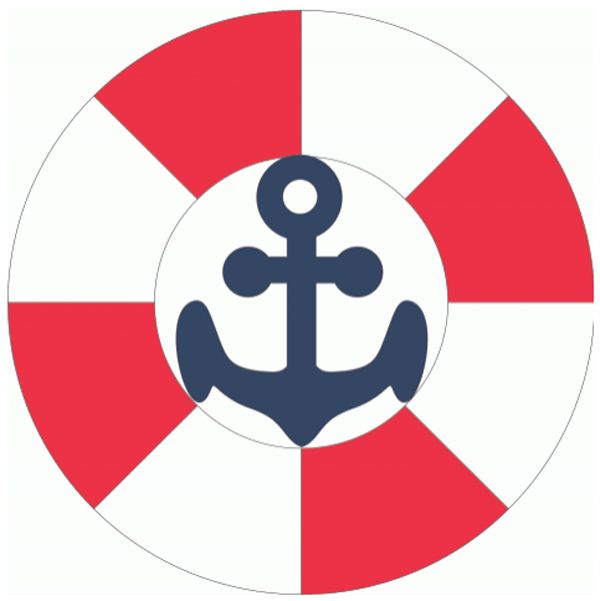 1 million)
1 million)
Peru Lima (9.6 million)
Colombia Bogota (7.3 million)
Brazil Rio de Janeiro (6.1 million)
Chile Santiago (5.4 million)
Venezuela Caracas (3.1 million)
Argentina Buenos Aires ( 3.0 million)
Brazil El Salvador (2.9 million)
Brazil Brasilia (2.4 million)
Brazil Fortaleza (2.4 million)
Commons-logo.svg Wikimedia Commons media files
South America is one of the six continents of the planet Earth, located in the south of the Western Hemisphere. It is washed in the west by the Pacific Ocean, in the east by the Atlantic, in the north by the Caribbean Sea, which is a natural boundary between the two Americas. The Isthmus of Panama in the northwest of the mainland connects South America with North.
South America also includes various islands, most of which belong to the countries of the continent. The islands in the Caribbean belong to North America [source not specified 552 days].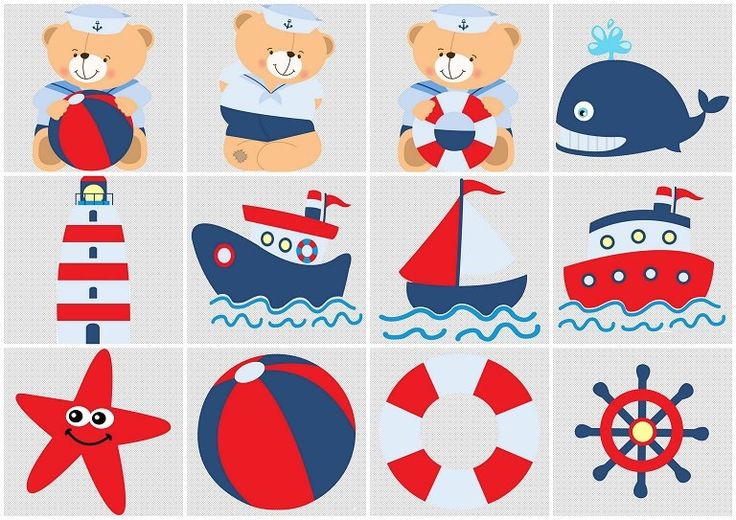 The South American countries that border the Caribbean – including Colombia, Venezuela, Guyana, Suriname, French Guiana and Panama – are known as Caribbean South America.
The South American countries that border the Caribbean – including Colombia, Venezuela, Guyana, Suriname, French Guiana and Panama – are known as Caribbean South America.
The area of the continent is 17.84 million km² (4th place among continents; only slightly larger than Russia in area), population – 387,489,196 (2011) people (4th place among continents).
Content
1 Origin of the name
2 History
2.1 Pecclassical period
2.2 Opening of South America
2.3 Spanish expeditions XV – XVI
2.3.1 Francisco Orellana 9000 3 Geographical Studies
9000 4 Geography 9000 4 GENERALLY
4.1 Outgoing points
4.2 Relief
4.3 Mountain West
4.3.1 Babber Desert
4.3.2 El-Neno
4.4 East
4.4.1 Brazilskoye Plaigure 9000 4,0002 4000. .3 Patagonium
5 Geology
6 climate
7 Hydrography
7.1 River system
7.2 Ozhera
8 Political division
9 Politics
10 Demography
10.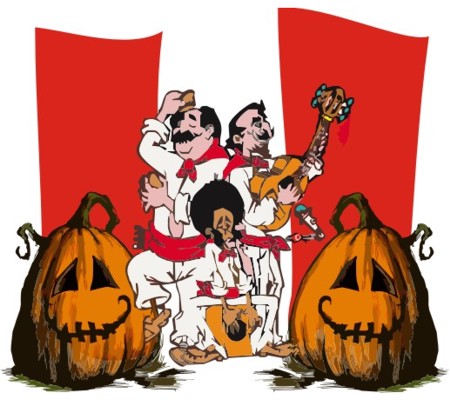 1 Ethnic groups
1 Ethnic groups
10.2 Languages
11 Economics
12 Tourism
13 Culture
13.1 Sport
14 cm. Also
150002 16 references
Origin This continent was first used by Martin Waldseemuller, putting on his map the Latin version of the name Amerigo Vespucci, who, in turn, first suggested that the lands discovered by Christopher Columbus were not related to India, but were the New World, previously unknown to Europeans.
Comprehensive map of South America
South America from space
History
See also: Pre-Columbian America
See also: History of South America
America (1553)
The history of the continent can be conditionally divided into three stages. The first is the period of formation, flourishing and decline of autochthonous civilizations (Incas, etc.). The second is the era of European conquest (Conquest) and colonialism 1500-1800, when most of the continent was dependent on two European countries (Spain and Portugal).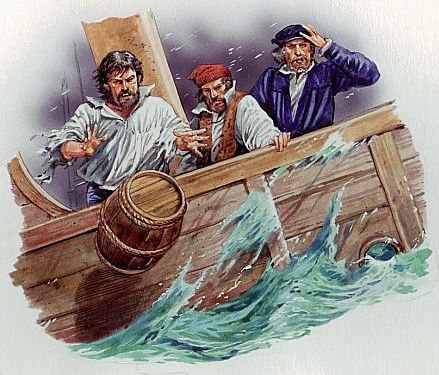 Despite the relatively short duration, it was during this period that the languages and cultures, economies, as well as the beginnings of the statehood of most modern Latin American states, took shape. The history of the countries of the Guiana coast should be considered separately. Guyana, Suriname and, to a lesser extent, French Guiana are markedly different from most Spanish and Portuguese speaking countries on the continent.
Despite the relatively short duration, it was during this period that the languages and cultures, economies, as well as the beginnings of the statehood of most modern Latin American states, took shape. The history of the countries of the Guiana coast should be considered separately. Guyana, Suriname and, to a lesser extent, French Guiana are markedly different from most Spanish and Portuguese speaking countries on the continent.
Preclassic
There are two versions of the possible settlement of the territories of South America by humans. According to the first, the settlement came from Asia, from the territory of modern Russia, through the Bering Strait and North America, however, not all existing archaeological finds fit into this theory [source not specified 2427 days], in connection with which a theory is put forward [by whom?] about the possibility the existence of “pre-Siberian” South American natives.
The first agricultural experiences of man in South America date back to 6500 BC.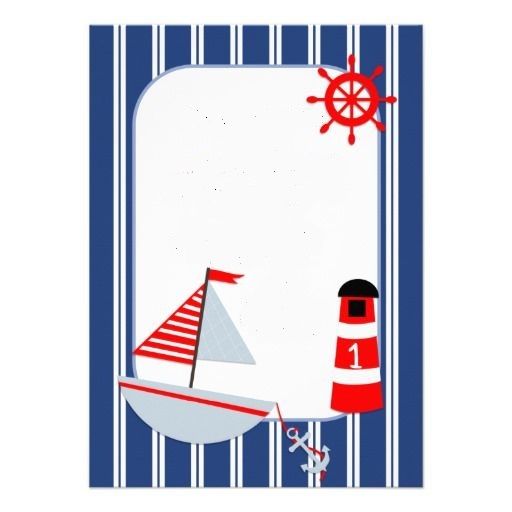 e., when bananas, potatoes and hot red peppers began to be cultivated in the Amazon.
e., when bananas, potatoes and hot red peppers began to be cultivated in the Amazon.
Discovery of South America
In an effort to open a sea route to India, Christopher Columbus crossed the Atlantic Ocean in 1492 and discovered the Greater Antilles. The first expedition was followed by a second, then a third. He laid the route of his third expedition much to the south of the lands already known to him and discovered the island of Trinidad, guiding a ship between the island and an unknown coast. The Spaniards were surprised that the water along it was almost fresh. The admiral wrote in his diary: “… such a powerful river could only exist on the mainland, and there is still a mainland in the south.”
Spanish Expeditions XV—XVI
Following Columbus, numerous Spanish expeditions went to South America in search of new lands and new riches – gold and jewels.
Expedition of Francisco Orellana
At the end of December 1541, the flotilla of Francisco Orellana, consisting of a brigantine and four canoes, began to descend to the ocean along the Napo River.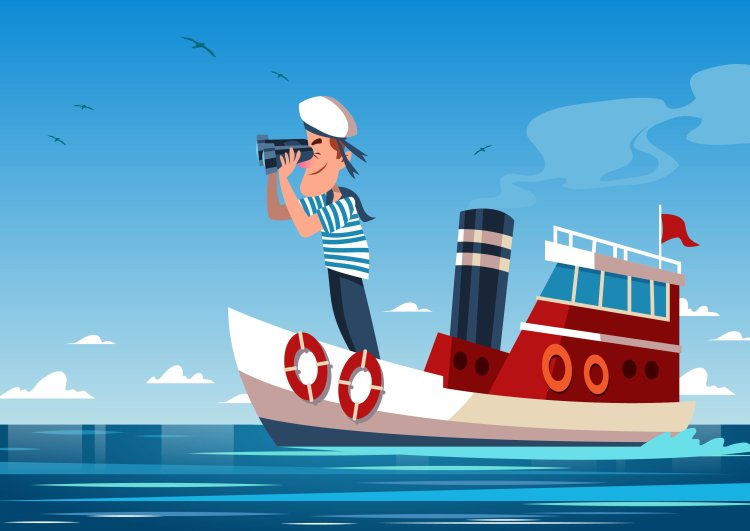 After more than a month of swimming, they ended up in a river “wide as the sea”, that is, in the Amazon. On the way to the east, the Spaniards met Indian villages, saw numerous tributaries. A huge left tributary, the waters of which were “black as ink”, they called the Rio Negro – “black river”. Only in August 1542 did they reach the mouth of the river.
After more than a month of swimming, they ended up in a river “wide as the sea”, that is, in the Amazon. On the way to the east, the Spaniards met Indian villages, saw numerous tributaries. A huge left tributary, the waters of which were “black as ink”, they called the Rio Negro – “black river”. Only in August 1542 did they reach the mouth of the river.
Geographical research
In the study of the nature of the mainland, the role of the German naturalist and geographer Alexander Humboldt, who traveled through Central and South America in 1799-1804, played a great role[2]. A deeper study of individual territories of the mainland began in the 19th century. In 1821-1828, a Russian expedition led by Grigory Ivanovich Langsdorf explored the interior of Brazil. Valuable information about the geological structure, climate, plants and animals of the Amazonian lowland was collected by the English traveler Henry Bates during the expedition of 1848-1859.years.
Geography
The length of the mainland is 7350 km from north to south and 5180 km from west to east.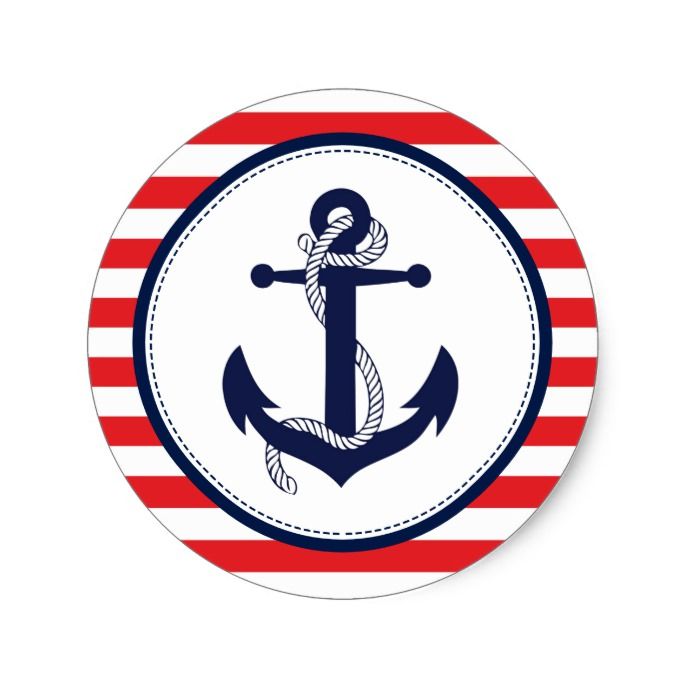
Extreme points
Northern – Cape Galinas 12°27′ sh. 71°39′ W d.HGЯO
South (mainland) – Cape Forward 53°54′ S sh. 71°18′ W d.HGЯO
South (island) – Diego Ramirez 56 ° 30′ S sh. 68°43′ W d.HGЯO
Western – Cape Parinas 4 ° 40′ S sh. 81°20′ W d.HGЯO
Eastern – Cape Cabo Branco 7 ° 10′ S sh. 34°47′ W e.HGЯO
Relief
According to the nature of the relief, South America can be divided into the Mountain West and the Plain East.
The average height of the mainland is 580 meters above sea level. The Andes mountain system stretches along the entire western edge. In the north of the mainland rises the Guiana Plateau, in the east – the Brazilian, between which is the Amazonian lowland. To the east of the Andes, lowlands lie in the foothills.
Geologically, quite recently, the Andes were the scene of active volcanic activity, which continues in the modern era in several areas.
Mountain West
Atacama Desert
The almost flat surface of these plains is favorable for the formation of large river systems of the Amazon, Orinoco and Parana with wide and deep river valleys. A large area of the mainland is occupied by the Guiana and Brazilian plateaus. Often they consist of several plateaus.
A large area of the mainland is occupied by the Guiana and Brazilian plateaus. Often they consist of several plateaus.
Brazilian plateau
Main article: Brazilian Highlands
Pampa
Main article: Pampas
Patagonium
Main article: Patagonia
Geology
After the collapse of the PANGEY PANGEY The territory of South America was combined with Africa, Australian and Antarctica as part of the Gondwana continent. At the end of the Cretaceous, Gondwana disintegrated, and until the end of the Tertiary, South America was an island. A special fauna existed here, dominated by notoungulates. After the formation of the isthmus with North America, the influx of new fauna led to the almost complete extinction of the local fauna.
Climate
There are 6 climatic zones in South America: Subequatorial zone (2 times), Equatorial zone, Tropical zone, Subtropical zone and Temperate zone.
Most of South America has a subequatorial and tropical climate, with well-defined dry and wet seasons; on the Amazonian lowland – equatorial, constantly humid, in the south of the mainland – subtropical and temperate. On the plains of the northern part of South America, up to the Southern Tropic, the temperature is 20-28 ° C all year round, to the south in January (summer) it drops to 10 ° C. In July, that is, in winter, the average monthly temperatures drop to 10-16 ° C on the Brazilian plateau, and to 0 ° C and below on the Patagonian plateau. In the Andes, the temperature decreases markedly with height; in the highlands it does not exceed 10 °C, and frosts are not uncommon here in winter.
On the plains of the northern part of South America, up to the Southern Tropic, the temperature is 20-28 ° C all year round, to the south in January (summer) it drops to 10 ° C. In July, that is, in winter, the average monthly temperatures drop to 10-16 ° C on the Brazilian plateau, and to 0 ° C and below on the Patagonian plateau. In the Andes, the temperature decreases markedly with height; in the highlands it does not exceed 10 °C, and frosts are not uncommon here in winter.
The windward slopes of the Andes in Colombia and southern regions of Chile are the most humid – 5-10 thousand mm of precipitation per year.
Glaciers occur in the southern part of the Andes and on individual volcanic peaks to the north.
South America is the wettest continent on Earth.
Hydrography
River system
Iguazu Falls
The most important river systems in South America are the Amazon, Orinoco and Parana, with a total basin of 9,583,000 km² (the area of South America is 17,850,568 km²).
The highest waterfall in the world, Angel Falls, is located in South America. On the mainland, there is also the most powerful waterfall – Iguazu.
Amazon
Parana
Paraguay
Uruguay
Orinoco
Lakes
Lakes
The largest in area is Lake Maracaibo in Venezuela, it is also one of the oldest on the planet.
Titikaka
Maracaibo
Patus
Political division
Political history of South America from 1700 to 1975
countries and territory
(km²) Population
(July 1, 2008) The population density
(by people/km²)
Argentina 2 766 890 40 677 348 14.3
Bolivia 1 098 580 857 870 8.1
Brazil 8 514 877 191 908 598 22.0
Venezuela 912 050 26 414 815 27 27 27 27 27 27 27 27 27 27 .8
Gayana 214 970 770 794 3.6
Columbia 1 138 910 45 013 674 37.7
Paraguay 406 750 6 347 884 15.6
Peru 1 285 220 27 925 628
SURINAM 163 270 270 270 270 270 270 438 144 2.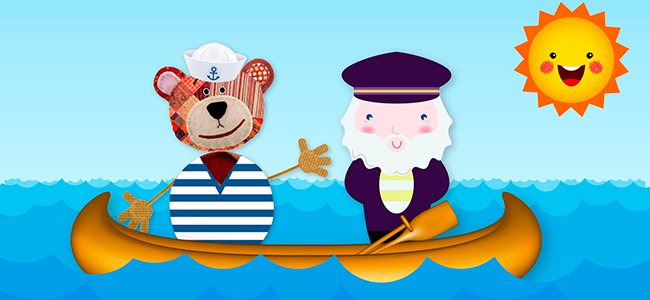 7
7
Uruguay 176 220 3 477 778 19.4
Falkland Islands (Great Britain, disputed by Argentina) 12 173 2967 0.24
Guiana (France) 91 000 209 000 2.1
Chile 756 950 16,454,143 21.1 90,003 90,002 Ecuador 283,560 13,927,650 47.1
South Georgia and the South Sandwich Islands (UK) 3093 20 0
Total 17,824,513 382,426,293 21.5
South Georgia and the South Sandwich Islands have no permanent population[specify]. The islands belong to Great Britain and are part of the overseas self-governing territory of the Falkland Islands.
Policy
Emblem of the MERCOSUR organization (in Portuguese).
In the political arena, the beginning of the 21st century in South America is marked by the arrival of left-wing forces, socialist leaders are elected in countries such as Chile, Uruguay, Brazil, Argentina, Ecuador, Bolivia, Paraguay and Venezuela. Against this background, the development of a market economy and international cooperation is widely visible in South America, for example, the organizations MERCOSUR and the Andean Community were created, the purpose of which is the free movement of citizens, economic development, the removal of customs duties and a policy of common defense.
Flag of UNASUR.
Since 2004, the Union of South American Nations, also known as UNASUR, has existed and developed – an organization that unites almost all countries of South America, created on the model of the European Union. Within the framework of the union, a consultative South American Defense Council was created, it is planned to create a common parliament[3], as well as the creation of a single market and the elimination of customs tariffs between the participating countries.
Demographics
Main article: Hispanics
Ethnic groups
Black Brazilians
Racial composition of the population
At the ethnic level, the population of South America can be divided into three types: Indians, whites and blacks. In countries such as Colombia, Ecuador, Paraguay and Venezuela, mestizos (descendants of the marriages of the Spaniards and the native population) predominate in demographic terms. Only in two countries (Peru and Bolivia) do Indians form a majority. Brazil, Colombia and Venezuela have significant populations of African descent.
Brazil, Colombia and Venezuela have significant populations of African descent.
In countries such as Argentina, Uruguay, Chile and Brazil, the majority of the population is of European origin, of which in the first two the majority of the population are descendants of immigrants from Spain and Italy. Descendants of the Portuguese, Germans, Italians and Spaniards live in the south and southeast of Brazil.
Chile received a wave of emigration from Spain, Germany, England, France, Italy, Austria, Switzerland, Scandinavia, Greece and Croatia during the 18th and early 20th centuries. According to various sources, from 1,600,000 (10% of the population) to 4,500,000 (27%) people from the Basque Country live in this country. 1848 was the year of mass immigration of Germans (also Austrians and Swiss) and, in part, French, mainly to the southern regions of the country, hitherto completely uninhabited, but rich in nature and minerals. This immigration of Germans continued after the first and second world wars in such a way that today about 500,000 Chileans are of German origin. In addition, about 5% of the Chilean population are descendants of Christian immigrants from the Middle East (Palestinians, Syrians, Lebanese, Armenians). Also, about 3% of the population of Chile are genetic [clear] Croats. The descendants of the Greeks make up about 100,000 people, most of them live in Santiago and Antofagasta. About 5% of the population is of French origin. From 600,000 to 800,000 – Italian.
In addition, about 5% of the Chilean population are descendants of Christian immigrants from the Middle East (Palestinians, Syrians, Lebanese, Armenians). Also, about 3% of the population of Chile are genetic [clear] Croats. The descendants of the Greeks make up about 100,000 people, most of them live in Santiago and Antofagasta. About 5% of the population is of French origin. From 600,000 to 800,000 – Italian.
Germans immigrated to Brazil mainly during the 19th and 20th centuries in connection with political and social events in their homeland. Today, about 10% of Brazilians (18 million) are of German origin. In addition, Brazil is a Latin American country with the largest number of ethnic Ukrainians (1 million).
Ethnic minorities in South America are also represented by Arabs and Japanese in Brazil, Chinese in Peru and Indians in Guyana.
See also: List of South American states by median age
Languages
Official languages of the states and territories of South America
The area of Indian languages in Latin America:
Quechua
Guarani
Aymara
Mapuche
of South America.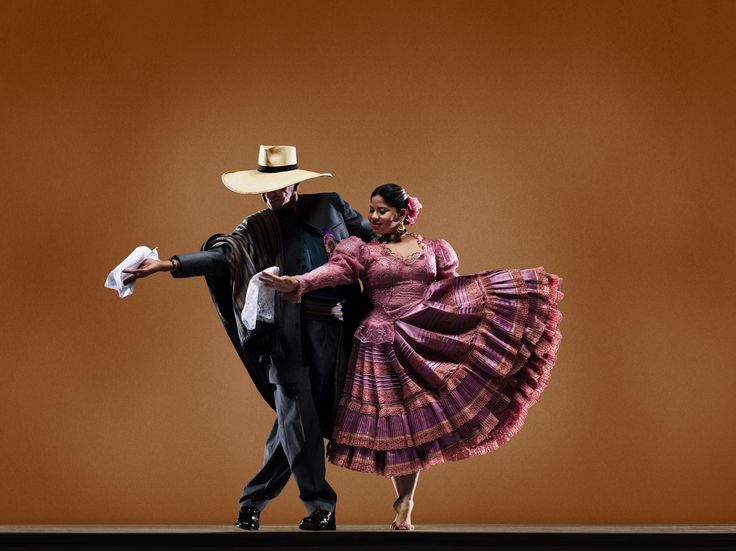 Portuguese is spoken by Brazil, whose population is about 50% of the population of this continent. Spanish is the official language of most countries on this continent. Other languages are also spoken in South America: in Suriname they speak Dutch, in Guyana they speak English, and in French Guiana they speak French respectively.
Portuguese is spoken by Brazil, whose population is about 50% of the population of this continent. Spanish is the official language of most countries on this continent. Other languages are also spoken in South America: in Suriname they speak Dutch, in Guyana they speak English, and in French Guiana they speak French respectively.
You can often hear the native languages of the Indians: Quechua (Ecuador, Bolivia and Peru), Guarani (Paraguay and Bolivia), Aymara (Bolivia and Peru) and Araucanian (southern Chile and Argentina). All of them (except the last one) have an official status in the countries of their linguistic area.
Since a significant proportion of the population of South America are from Europe, many of them still retain their own language, the most common of which are Italian and German in countries such as Argentina, Brazil, Uruguay, Venezuela and Chile.
The most popular foreign languages studied in South America are English, French, German and Italian.
Language number of carriers
Lang-es.gif Spanish 233 600 108
Lang-pt.gif Portuguese 191 480 630
Lang-en.gif English 9000 9000 9000
Lang-nl.gif Dutch 510 000 9000
Lang -fr.gif French 230,000
Economics
Rafael Correa, Evo Morales, Nestor Kirchner, Cristina Fernandez, Luis Inacio da Silva, Nicanor Duarte Frutos and Hugo Chavez at the signing of the documents establishing the Bank of the South.
In the post-crisis years of 2010-2011, the economies of Latin America showed serious growth rates ahead of the world average: in 2010 growth was 6%, and the forecast for 2011 speaks of 4.7%[4]. Due to historically high inflation in almost all countries in South America, interest rates remain high, typically twice as high as in the United States. For example, the interest rate is about 22% in Venezuela and 23% in Suriname. The exception is Chile, which pursues a free market economic policy with the establishment of a military dictatorship in 1973 and has been actively increasing social spending since the restoration of democratic rule in the early 1990s. This has resulted in economic stability and low interest rates.
This has resulted in economic stability and low interest rates.
South America relies on the export of goods and natural resources. Brazil (the seventh largest economy in the world and the second largest in the Americas) leads in total exports of $137.8 billion followed by Chile with $58.12 billion and Argentina with $46.46 billion[5].
The economic gap between rich and poor in most South American countries is considered to be greater than in most other continents. In Venezuela, Paraguay, Bolivia and many other countries in South America, the richest 20% own more than 60% of the country’s wealth, while the poorest 20% own less than 5%. Such a wide gap can be seen in many major South American cities, where makeshift shacks and slums sit next to skyscrapers and luxury apartments.
Countries GDP (nominal) in 2009[6] GDP in 2009[7] GDP per capita in 2009[7] HDI in 2007[8]
Argentina 326 474 572 860 14 413 ▲ 0.866
Bolivia 17 4413 424 4330 ▲ 0.729
Brazil 1 572 590 1 981 642 10 325 ▲ 0.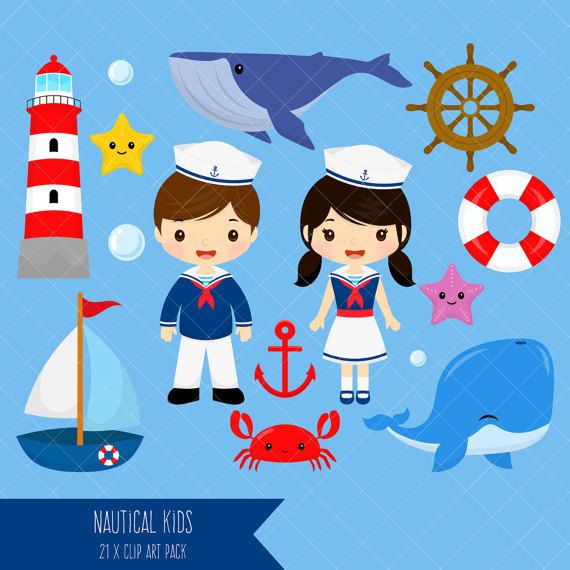 813
813
Chili 169 573 243 044 14 510 ▲ 0.878
Columbia 269 654 400 300 8215 ▲ 0.807
Falkland Islands? 75 25,000 N/A
Guiana (France) 3524[
Due to the wide ethnic ties, South American cuisine has taken a lot from African, American Indian, Asian and European peoples. For example, the cuisine in Bahia, Brazil is well known for its West African roots. Argentines, Chileans, Uruguayans, Brazilians and Venezuelans regularly consume wine, while Argentina along with Paraguay, Uruguay, and people living in southern Chile and Brazil prefer mate or the Paraguayan version of this drink – terrere, which differs from other themes, that it is served cold. Pisco is a distilled grape liqueur produced in Peru and Chile, however, there are constant disputes between these countries regarding its origin. Peruvian cuisine mixes elements of Chinese, Japanese, Spanish, African and Andean cuisines.
Sports
Diego Maradona 2012.jpg Pelé.jpg
Diego Maradona (Argentina) and Pelé (Brazil) are FIFA’s Footballers of the Century.